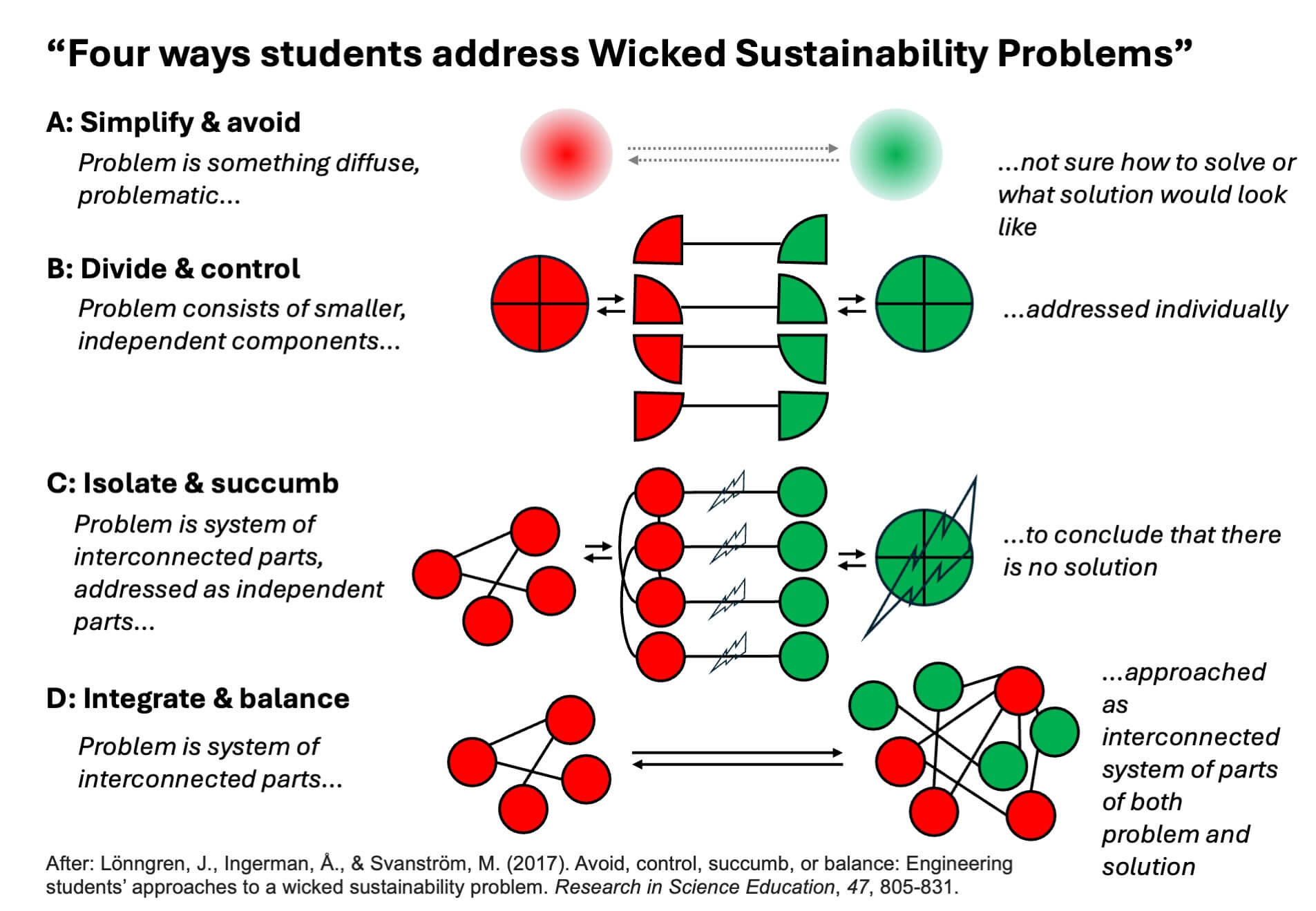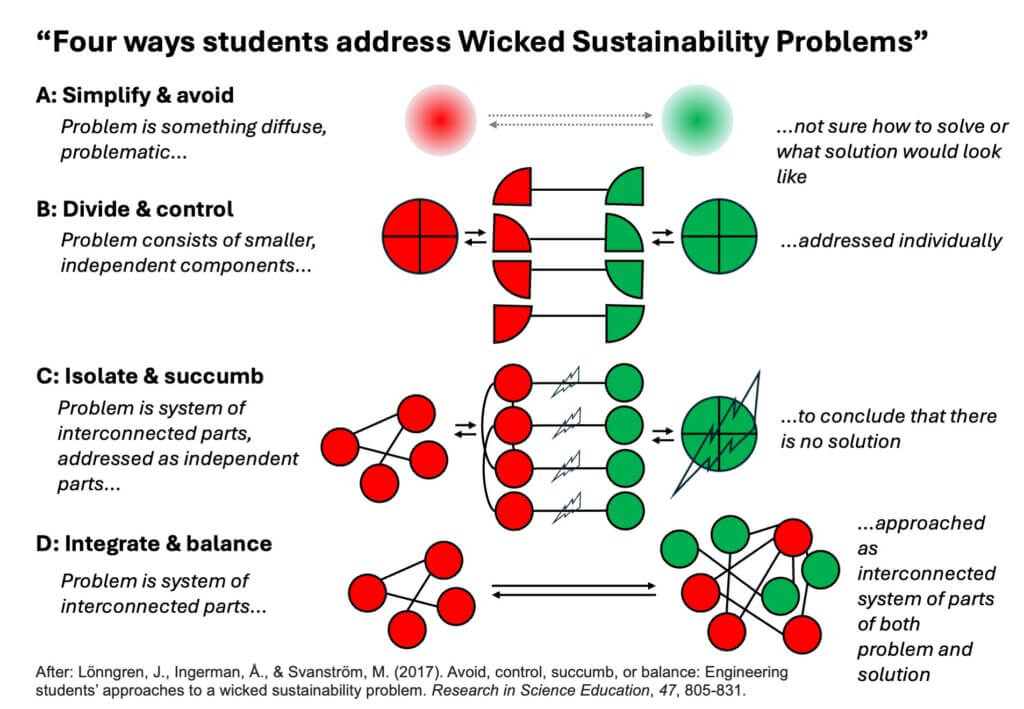
Different ways students are talking about Wicked Sustainability Problems (currently reading Lönngren, Ingerman, & Svanström; 2017)
When teaching for sustainability, we need to give students the chance to practice working with Wicked Problems, and we as teachers need to figure out where they are at in terms of thinking about the problem itself, possible solutions, and the way there. Lönngren, Ingerman & Svanström (2017) investigate this in the context of water availability in Jordan and find four typical ways students reason.
But first, a bit more about wicked problems. When it comes to sustainability wicked problems, they are typically
- difficult, if not impossible, to clearly and unambiguously to describe.
- addressable in different ways that can be conflicting
- changing and evolving over time, there will be not ever be an “end” when everything is solved satisfactory
- unique and therefore solutions cannot be reused or even generalized
- tangled up in different value systems, so that approaches are often evaluated very differently by different people
So, in short, they are a mess (but one nice approach in higher education quality management summarised here). If we want to teach approaching wicked sustainability problems, we first need to understand how students think about them. Lönngren et al. (2017) do that based on 10 in-depth interview, and in that context find 4 different ways students discuss the problems (but sometimes switching between different ways within the same interview and topic).
I redrew their figure (because that always helps me understand, see my version below) but in a nutshell, the four ways they find are
A: Simplify and avoid. Students see the problem as “problematic” and cannot describe it a lot more concretely than that, and they are not sure what a solution would look like or how to get there, but they expect one solution.
B Divide & control. Students describe a big problem that can be taken apart into smaller, independent components that they then address individually and put together as one big solution.
C. Isolate & succumb. Students see the problem as a system of interconnected parts, which they then address as if they were independently, but they realise that putting the solutions together does not actually solve the problem.
D. Integrate & balance. The problem is a system of interconnected parts, and it is approached as an interconnected systems of parts of both problems and solutions.

I find it really helpful to see these four ways (even though, of course, they are only based on how 10 students responded to a specific topic in an interview situation, so they are probably not generalisable). Nevertheless, it is useful to think about how students generally approach problems we confront them with, because this then helps us to scaffold instruction. It is not clear from just knowing how students talk about a problem what that would mean in terms of scaffolding, but maybe a first step would be to spend more time and discussions on the actual problem descriptions so all students understand and appreciate the “lots of smaller, interconnected problems” part. For example, letting students describe it themselves and prompting difficulties of “but when will the problem be solved?”, “how do you think about the neighbouring country and the effect it is going to have on them?”, etc, depending on what facets of the problem we might want to highlight, and only moving on from that step once the complexity of the problem seems to be appreciated. Of course, how that plays out depends completely on the context. But being aware of different ways students might potentially use might help us recognise where they need more time, reflection, support.
Lönngren, J., Ingerman, Å., & Svanström, M. (2017). Avoid, control, succumb, or balance: Engineering students’ approaches to a wicked sustainability problem. Research in Science Education, 47, 805-831.